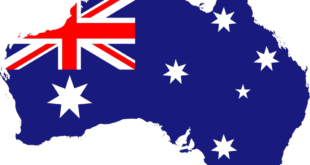Exactly when sunglasses first appeared is not clear, but some archeologists have posited that the Inuit peoples from prehistoric times wore flattened pieces of walrus ivory with narrow slits through which they could look while blocking the harmful rays of the sun.
Early sunglasses first appeared in the 12th century where judges in Chinese courts used flat planes of smoky quartz crystals to conceal their eyes when questioning witnesses. This was done to prevent the witnesses from guessing what the judge might be thinking and adjusting their testimony.
By the middle of the 18th century James Ayscough began experimenting with tinted lenses in spectacles to correct what he believed were specific eye impairments. He had no concerns about protecting eyes from the rays of the sun, so he did not think about using tinted glasses to protect the eyes from sunlight.
In the 19th and early 20th centuries yellow/amber or brown tinted spectacles wee commonly prescribed for those with syphilis because the eyes sensitivity to light was one of the symptoms of this terrible disease.
20th Century Sunglasses
By the early 1900s the use of sunglasses became widespread, in particular by stars of silent movies, and while most thought the stars were wearing them to avoid recognition by fans, but the real reason was because the arc lamps used for photographing films left the actors eyes perennially red.
This problem was solved with the introduction of ultraviolet light filters attached to the arc lamps along with improvements in film quality.
Mass production of sunglasses started in America by Sam Foster in 1929 when he began selling Foster Grant sunglasses through a Woolworth store located on the Atlantic City Boardwalk. By 1936 Edwin H. Land developed polarized sunglasses using his patented Polaroid filter.
Polarized lens are especially effective in reducing glare from shiny surfaces such as water and quickly became popular with fishermen who could now see into the water rather than the normal glare of reflected light off of the water’s surface.
Modern Sunglasses
Today sunglasses are widely used to improve eye comfort and visual clarity by protecting the eyes from the glare from sunlight. Disposable sunglasses are ordinarily dispensed to eye care patients after receiving special eye drops used during eye examinations by opticians.
In order to evaluate the effectiveness of sunglasses it requires some method to measure the protection they offer, and generally this is a measure of how effective they are in reducing the amount of UV (Ultraviolet Light) that reaches the wearers eyes.
Unfortunately most manufacturers indicate that their sunglasses meet the requirements of a specific standard as opposed to publishing exact numbers.
With the onset of the Second World War pilots found the need for sunglasses to protect their eyes at the higher altitudes was essential. In addition, it was important that the lenses covered the entire eye socket to prevent stray rays from the sun reaching the pilot’s eyes.
The military contracted to have Randolph sunglasses manufactured in the United States to meet US military specifications for impact resistance and ultraviolet light filtering.
Sunglasses For Protection
Ultraviolet radiation, or UV, has been associated with short and long term ocular problems like photokeratitis, pterygium, cataracts, various forms of eye cancer and snow blindness.
Medical experts advise that it is important to protect our eyes from UV rays, and recommend sunglasses that filter out or reflect 99%+ of UVA and UVB light with wavelengths up to 400 nm (nanometers).
Sunglasses that have a rating of UV 400 meet this standard, but sunglasses are insufficient to protect the wearer’s eyes from looking directly at the sun or watching a solar eclipse. Recent research has identified high energy visible light (HEV) as one of the causes of age related macular degeneration.
HEV light is also known as “blue light”, or light with wavelengths in the 400 to 400 nm range. Today some sunglasses have been specifically designed to block blue light by a minimum of 95%.
Sunglass Protection Ratings
In 2004 there was an effort made to create a worldwide ISO (International Organization for Standardization) standard for sunglasses resulting in the establishment of a standards committee, subcommittee, technical committee, and several working groups.
All standards are voluntary, so not all manufacturers comply with the standards and therefore some sunglasses don’t comply with any standards.
At the present time there are three standards:
Australia was first to introduce national standards for sunglass protection based upon the amount of absorbed light. The Australian Standard has five ratings based upon the amount of absorbed light.
The ratings established for this standard range from “0” which provides some protection to a rating of “4”, which provides a high level of protection. Driving with sunglasses with a “4” rating is not recommended.
The European Standard has four ratings which range from “0” to “7”. “0” provides insufficient UV protection, “2” for sufficient UHV protection, “6” for good UV protection and “7” for full UHVV protection.
However, this rating standard provides to rating for radiation over 380 nm, and therefore does not meet the UV 400 standard required by other countries like the United States.
The US standard is called ANSI Z80.3-2001 and includes 3 categories along with some requirements for basic and high impact protection for the eyes. These lenses protect the range of 280 nm through 380 nm along with an impact test using a 1” steel ball from 50” onto the lens which must not allow any part of the lens to touch the eye.
Sunglass Lenses
The color of the lens depends upon the purpose for which they are being worn. Red, grey, yellow and brown lenses are recommended to minimize color distortion and enhance safety when driving a car or school bus.
Gray and green lenses are considered neutral because they allow the wearer to see true colors, while brown lenses can cause some color distortion.
Orange or yellow lenses increase both depth perception and contrast, and are typically used by pilots, boaters, fishers, shooters and hunters because of the contrast enhancement and depth perception properties.
Turquoise lenses are excellent for medium and high light conditions because they enhance contrast without any color distortion.
Blue and purple lenses are just for looks, or cosmetic appearance.
Mirrored lens coatings deflect some light, particularly in bright lighting conditions, but do not reflect UV radiation and therefore are considered mainly fashion or stylish appurtenances for wearers.
Lenses are made either of glass or plastics like acrylic, polycarbonate, CR-39 or polyurethane. Glass lenses have the best optical clarity and are scratch resistant, but are heavier than plastic lenses.
They can shatter or break on impact while plastic lenses are more prone to scratching but are almost shatterproof which makes them great for impact protection.
Polarized Sunglasses
Because the reflection of light from flat road surfaces or smooth water is generally horizontally polarized special filters can block this kind of intense reflected light and reduce glare.
This means that, instead of light being scattered in all directions in more usual ways, reflected light generally travels in a more horizontally oriented direction. This creates an annoying and sometimes dangerous intensity of light that we experience as glare.
Polarized sunglasses improve comfort and visibility, but there can be instances when it is not advisable to use these kinds of lenses. For example, when downhill skiing you don’t want to block light reflecting off of ice patches, patches of ice can represent danger for a skier.
Another potential problem is that polarized lenses sometimes reduce the visibility of images produced by liquid crystal displays (LCDs) found on the dashboards of some cars or in modern aircraft.
Pilots have reported similar problems when viewing LCD displays on instrument panels, which can be a crucial issue when it comes to making split-second decisions based strictly on information displayed on a panel.
Pilots, however, need non-polarized sunglasses like the Randolph sunglasses manufactured for the US military and worn by fighter pilots around the world.
 Real Time News – Go Fan Boy All the news and information that matters
Real Time News – Go Fan Boy All the news and information that matters





